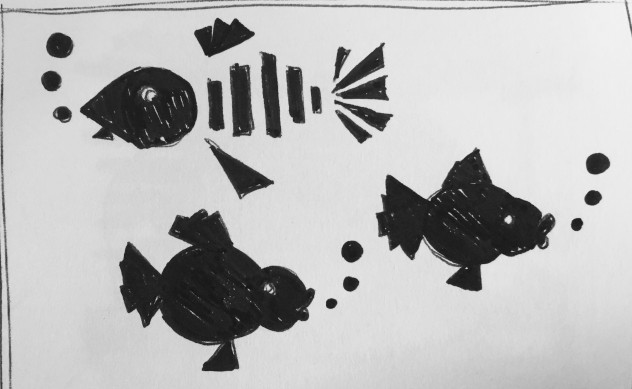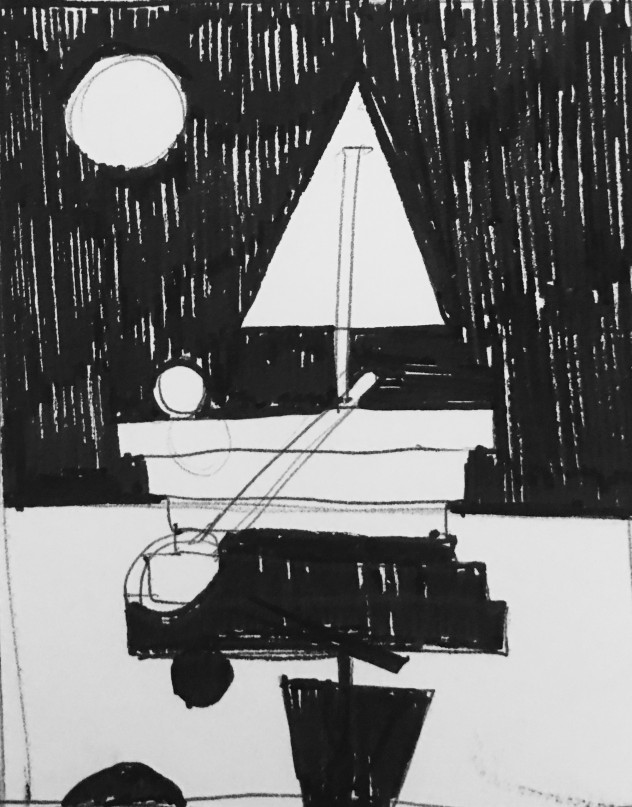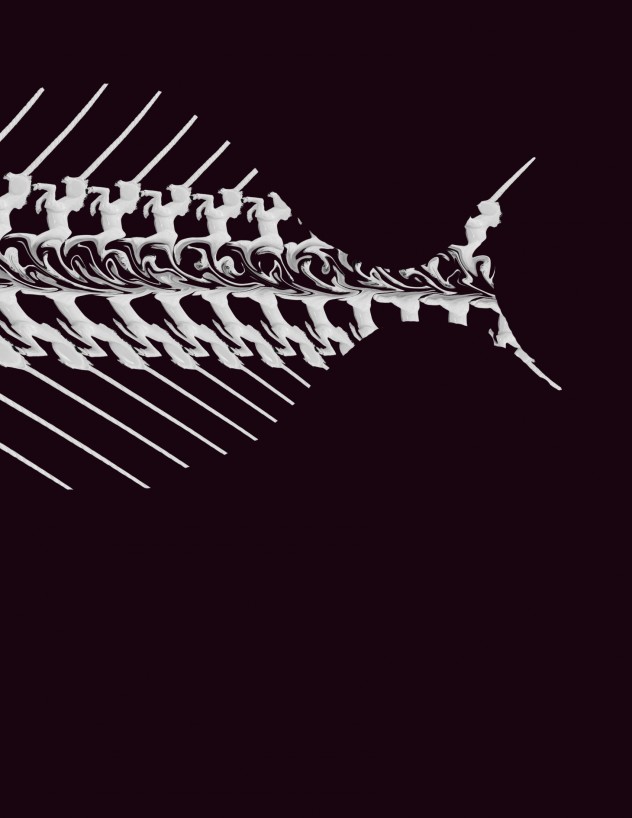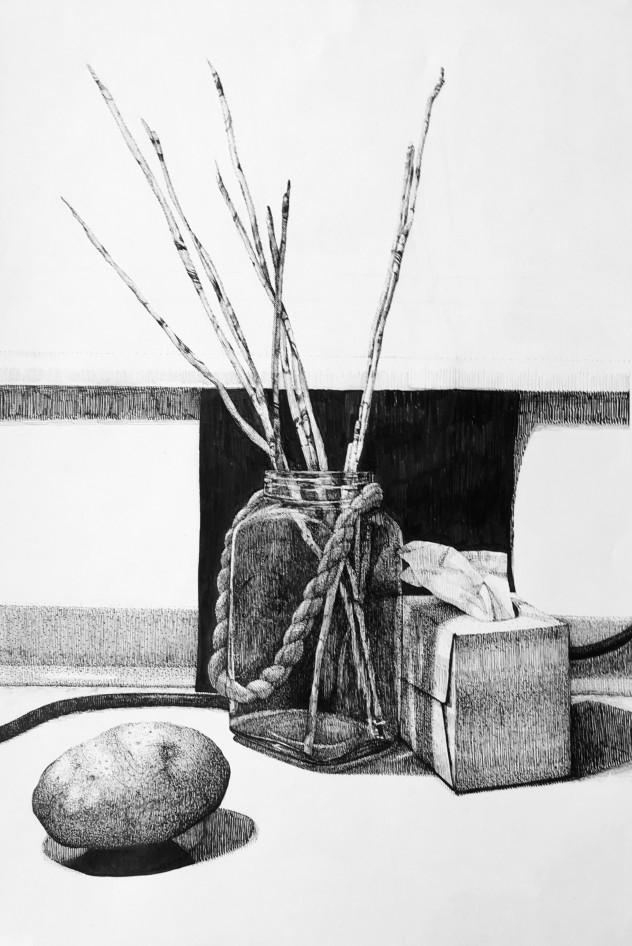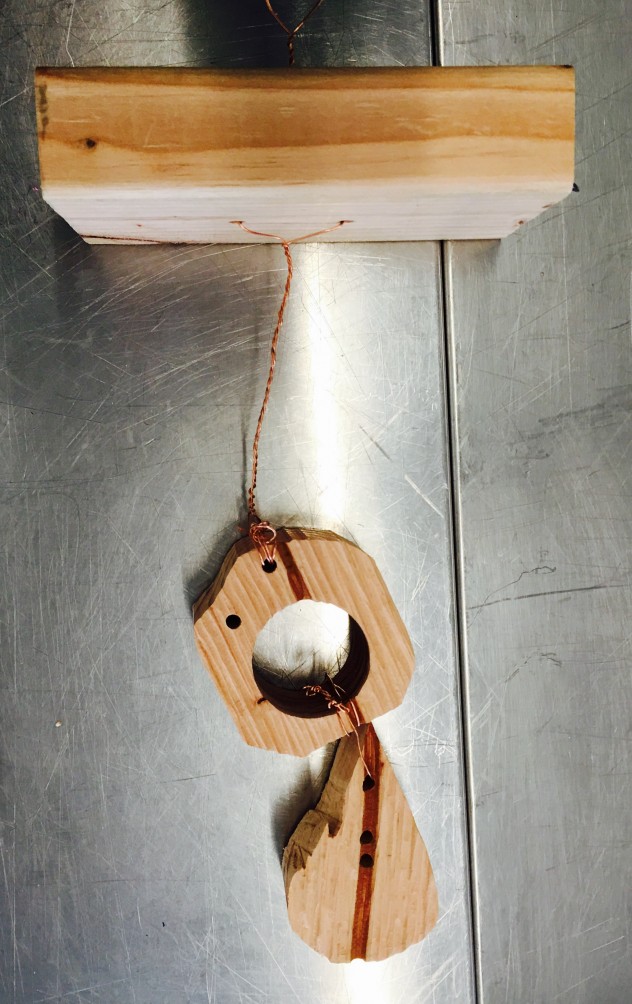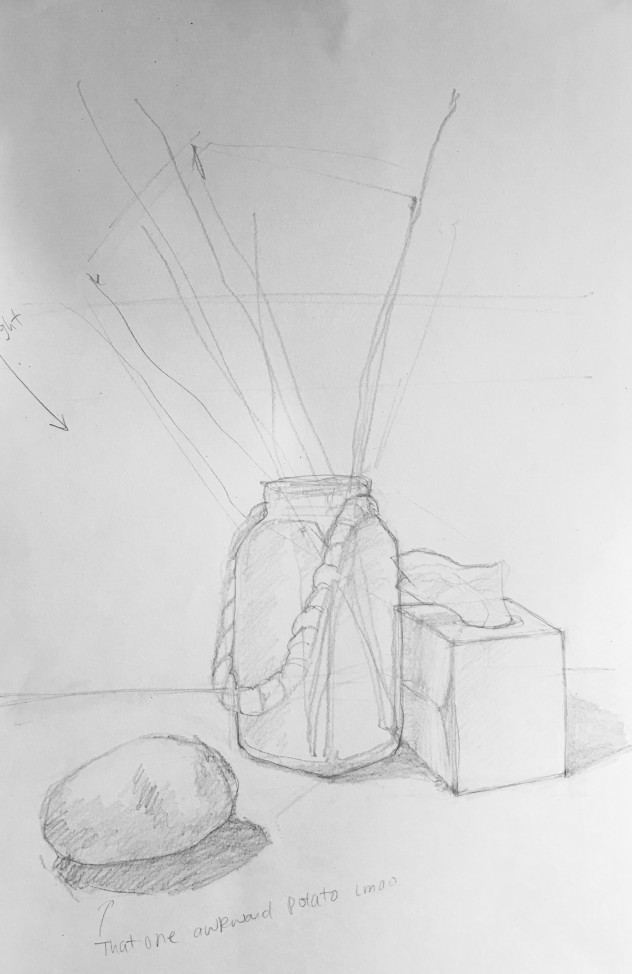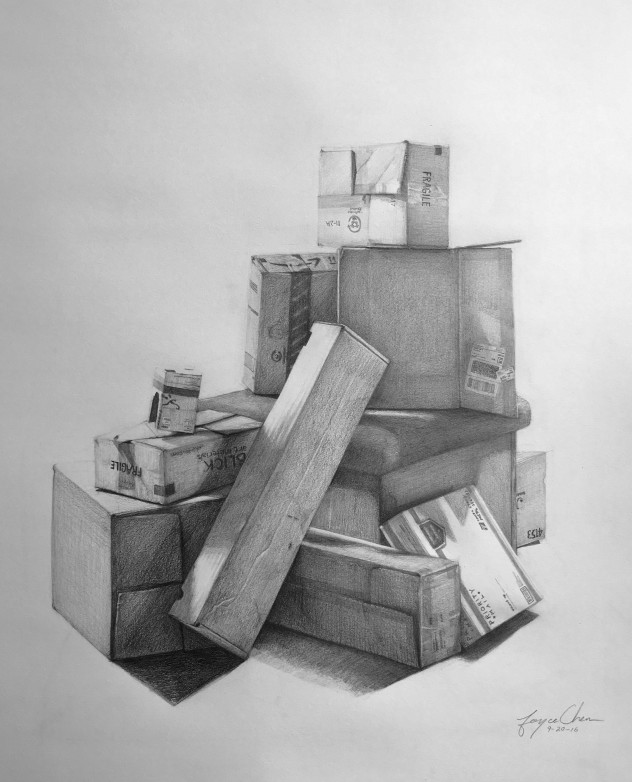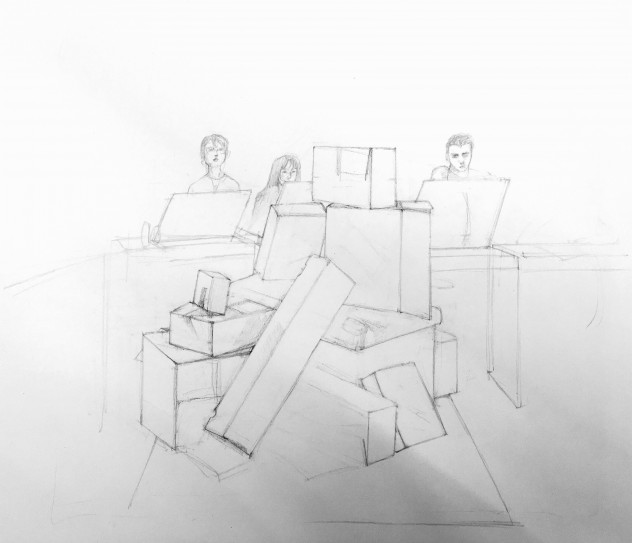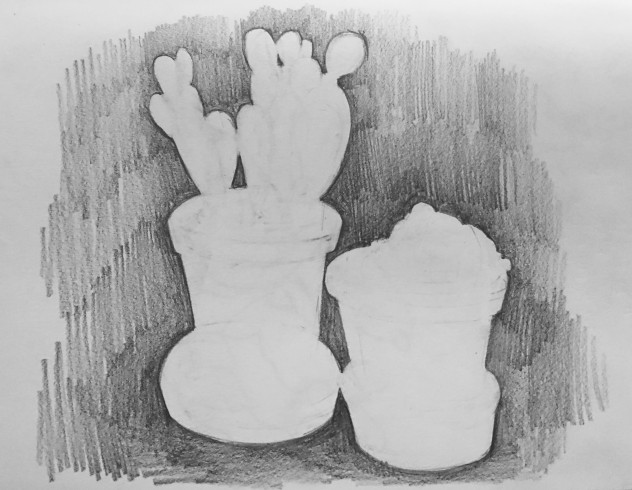Monthly Archives: September 2016
Potato
Continuous Cities 3
Continuous Cities 3
Continuous Cities 3 is part of a collection in Italo Calvino’s Invisible Cities. In this certain chapter, the unnamed narrator pays this certain city many visits. However, over time, the narrator starts to realize that these mysterious huddled “round-faced characters” start multiplying and eventually take over the entire once peaceful scenery. At the very end, the narrator looks out the window from his haven only to find himself surrounded by these dark, huddled figures.
My (suspended) piece represents a pendulum bob of a grandfather clock. It represents the progress and time that passes as the huddled figures, represented by dark holes, gradually infiltrates the city. There is a scar in the wood, referencing the ditch and how the faces start piling up in it. The main hole in my piece symbolizes the window the narrator would so often look through. At the end of the summary, the narrator peeks through the hole one last time, as he ultimately becomes nothing but one of the faces in the populous, dark mass.
Still-life Outline
More Boxes
Boxes
Negative Space PT. 2
Negative Space
Gestalt: Continuation
For my Gestalt composition, I chose the continuation principle. Continuation is the movement of the objects, directing the viewers’ eyes as they first are exposed to the piece. I used ellipses and rectangles and made little sheep. The top dark part is where all the sheep are crowded and as they slowly trickle through the fence, they flow and move to the bottom right of the screen. Continuation
Anomaly and Contrast
